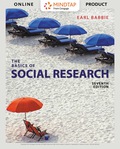
Introduction
What is the author’s main research question? This study argues that people's acceptance of particular movement activities is shaped by their perception of state legitimation.
What theoretical frameworks are referred to, and which ones are used? Some scholars see the protests as street theater, the author used state-society relations frameworks.
What methodology is the author using? What type of data collection was chosen? What is the unit of analysis? The author uses interviews with survivors, memoirs, and monographs. Patterns of movement is the unit of analysis.
Does the author have a hypothesis? If so, what is it? His initial hypothesis was that if the patterns of a social movement are determined by culture, the 1989 BSM should appear less traditional than the earlier movements, since Chinese culture has become significantly more modern during the 20th century.
How does the author conceptualize key terms such as state, state-society, and traditionalism? The state is interested in maintaining the status quo, state-society is how society is used to support the state; and traditionalism is how ancestors have approached problems.
What are the study’s findings? This article shows that structural factors such as the nature of a state, the level and strength of intermediate organizations in society, and the sources of state legitimation all have motivational and micro-level behavioral consequences.
What is the significance of this study? Are you convinced by the author, or do you see weaknesses in the study? This study is a new way to view challenges in China through a cultural lens. The author convinced me, though weakness could be found in comparing rebellions in 1911 with 1989 without controlling for different conditions completely.
Want to see the full answer?
Check out a sample textbook solution
Chapter 15 Solutions
The Basics of Social Research, Enhanced Edition, Loose-Leaf Version
- Define and discuss the various categories of auto theft, and what ypes of individuals are most likely to commit each type of auto theft?arrow_forwardCompare and contrast occasional criminals with professional criminals. Include Sutherland’s Professional Thief and Klocker’s Professional Fence in your discussion. Please include references.arrow_forwardWhat ethical dilemmas do the characters Andrew Becket, Joe Miller, and Andrew's law firm face in the film Philadelphia? Please provide references.arrow_forward
- How do the major systems of social stratification—slavery, caste, and class—differ in terms of mobility, opportunity, and control over resources, and how do these systems continue to influence contemporary society, especially in the United States? Compare and contrast Karl Marx’s and Max Weber’s theories of social class. How do their perspectives help us understand current patterns of inequality related to income, wealth, power, and prestige in the U.S.? What are the defining features of the contemporary class structure in the United States, and how do sociological models (Weberian and Marxian) help us analyze social mobility and economic disparities across different populations? What is the difference between income inequality and wealth inequality, and how do these disparities impact life chances, access to resources, and generational mobility for individuals and families? What structural and demographic factors contribute to poverty in the United States, and how does poverty…arrow_forwardWhat ethical dilemmas did the characters in the film Philadelphia face? Please include references.arrow_forwardRead the scenario below and answer some questions on effective supervision and the control of germs using what you learned in the session.Laurie works at a facility-based child care program and is taking courses to become certified as a Level 1 Early Childhood Educator. Last Tuesday was a busy day for Laurie.She was taking care of three toddlers when one of them announced that she had to “go potty”. The other two suddenly decided that they had to do the same. Laurie looked around to let her room partner know that she is taking the three toddlers to the classroom bathroom, but her room partner was engaged playing with other children. “How hard can it be?” thought Laurie as she led the three children to the bathroom.Two of the children had soiled their diapers. Before changing them, Laurie washed her hands. She proceeded to change each child’s diaper. While Laurie was removing the diaper of the second child, the third child said, “I really have to go potty” and wet his pants. Laurie…arrow_forward
- Choose an age group and design a play experience that will meet the four holistic play-based goalarrow_forwardPrompt: Modern technology has done little to prevent crime. Write one intro paragraph that includes a thesis statement as the last sentence. (There are three approaches: define key or vague terms, narrow the focus of the topic, and provide relevant background information.) ONLY USE ONE APPROACH. 4-5 descriptive bullet points (with an explanation beside them)(the 5 topics are: science/tech medical care, politics, social relationships, the professional arena, and entertainment) (Bullet points don’t have to be brief as the example provided below) Ex: 1. Science/Tech: Medical Care: US study showed that stereotyping influences who is believed and who isn't in emergency rooms: *White males are believed most often. *Black males are believed less often than white males. *White females are believed less often than males of any color, and Black females are believed least often of any ethnicity/gender.arrow_forwardHow does DNA evidence work, and why is it considered a powerful tool in criminal investigations? Please include references.arrow_forward
 Social Psychology (10th Edition)SociologyISBN:9780134641287Author:Elliot Aronson, Timothy D. Wilson, Robin M. Akert, Samuel R. SommersPublisher:Pearson College Div
Social Psychology (10th Edition)SociologyISBN:9780134641287Author:Elliot Aronson, Timothy D. Wilson, Robin M. Akert, Samuel R. SommersPublisher:Pearson College Div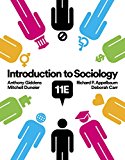 Introduction to Sociology (Eleventh Edition)SociologyISBN:9780393639407Author:Deborah Carr, Anthony Giddens, Mitchell Duneier, Richard P. AppelbaumPublisher:W. W. Norton & Company
Introduction to Sociology (Eleventh Edition)SociologyISBN:9780393639407Author:Deborah Carr, Anthony Giddens, Mitchell Duneier, Richard P. AppelbaumPublisher:W. W. Norton & Company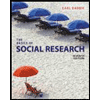 The Basics of Social Research (MindTap Course Lis...SociologyISBN:9781305503076Author:Earl R. BabbiePublisher:Cengage Learning
The Basics of Social Research (MindTap Course Lis...SociologyISBN:9781305503076Author:Earl R. BabbiePublisher:Cengage Learning Criminalistics: An Introduction to Forensic Scien...SociologyISBN:9780134477596Author:Saferstein, RichardPublisher:PEARSON
Criminalistics: An Introduction to Forensic Scien...SociologyISBN:9780134477596Author:Saferstein, RichardPublisher:PEARSON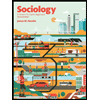 Sociology: A Down-to-Earth Approach (13th Edition)SociologyISBN:9780134205571Author:James M. HenslinPublisher:PEARSON
Sociology: A Down-to-Earth Approach (13th Edition)SociologyISBN:9780134205571Author:James M. HenslinPublisher:PEARSON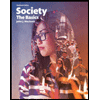 Society: The Basics (14th Edition)SociologyISBN:9780134206325Author:John J. MacionisPublisher:PEARSON
Society: The Basics (14th Edition)SociologyISBN:9780134206325Author:John J. MacionisPublisher:PEARSON





